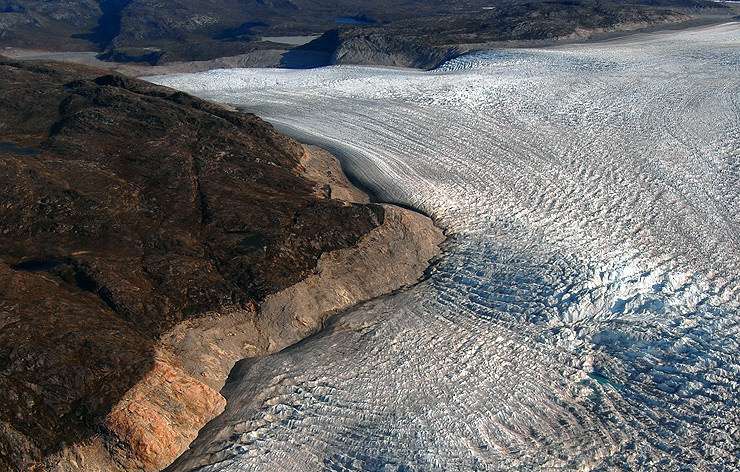Computer model predicts the likelihood of crossing several dangerous climate change thresholds

A new computer model of accumulated carbon emissions predicts the likelihood of crossing several dangerous climate change thresholds. These include global temperature rise sufficient to lose the Greenland Ice Sheet and generate seven meters of long-term sea level rise, or tropical region warming to a level that is deadly to humans and other mammals.
"The model is based on idealized representations of societal, technological and policy factors," said lead researcher Jeremy Fyke, of the Los Alamos National Laboratory Theoretical Division, Fluid Dynamics and Solid Mechanics group. "It's focused on climate-carbon sensitivities and is designed to reproduce both recent carbon emission trends and long-term future carbon emission projections."
The research was published in the Institute of Physics' Environmental Research Letters.
Using 100,000 model simulations that sample wide range of carbon emission scenarios and corresponding full cumulative carbon emissions, the study demonstrates a probabilistic connection from human behavior to the physical climate response, which allows the risk of crossing dangerous temperature thresholds to be quantified.
This work goes beyond the so-called Representative Concentration Pathways (RCPs), that are widely used in climate research, "because unlike RCPs our scenarios come with an important quantitative estimate of how likely each scenario actually is," said Fyke.
A unique part of the study is that it's timing-agnostic. "Basically, think of the climate system as a 'carbon bathtub,'" said Fyke. "What this study mainly does is assess how full the bathtub might get. It could get to the same level at different times. For example, the tap could go full-out for 20 years, or a drip for 100 years, but the end result—net warming—is essentially the same, and only depends on the level the 'carbon bathtub' gets to, before we turn off the tap completely."
The issues with green house gases are extraordinary and complex and the consequences of rising green houses gases will have global impacts. "Of course, our results are model dependent and, as with any model, could certainly change as the model design or input parameters evolve," said Fyke. "However, demonstration of a risk-based assessment of climate change due to cumulative emissions is important, because such assessments are needed by policy-makers and planners involved in large-scale climate change mitigation and adaptation efforts."
More information: Jeremy Fyke et al. A probabilistic analysis of cumulative carbon emissions and long-term planetary warming, Environmental Research Letters (2015). DOI: 10.1088/1748-9326/10/11/115007
Journal information: Environmental Research Letters
Provided by Los Alamos National Laboratory

















